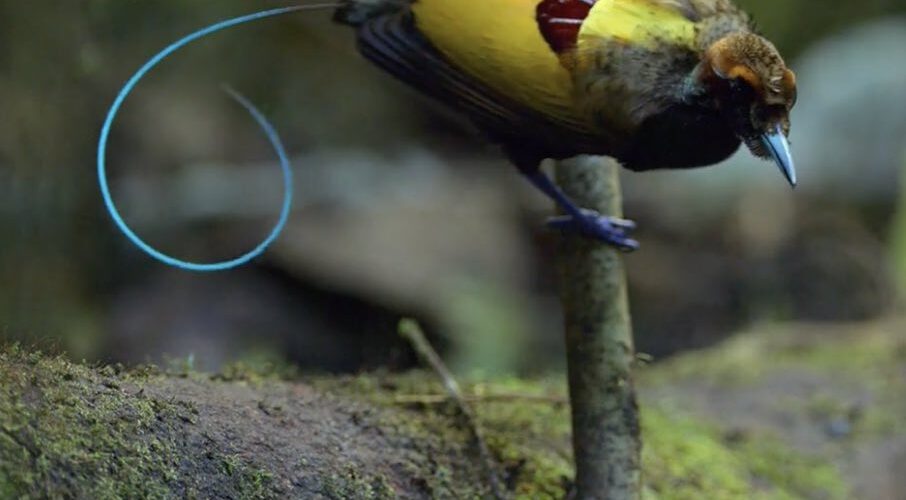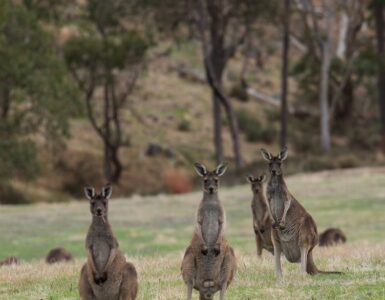“Females are very fussy, and she would expect his carefully choreographed routine to be faultless.
He opens with a bow. Next, his blue eyes must flash yellow.
He has all the moves and fancy footwork. His sidestep and head bob looks good from any angle, but his crowning glory can only be appreciated from her perspective.
His performance has been a triumph and won her approval.“
This is not a scene from a romantic drama or a movie; it is narration by celebrated film presenter David Attenborough for a dance sequence presented by the male bird to woo her female companion. The scene is shown in the fourth episode of the famous Netflix Documentary Our Planet.
In another documentary, BBC Earth’s Fascinating Colours of the Animal Kingdom, we see another Bird’s enticing dance display. However, in this one, the male bird is not as lucky to win her partner because, at the last moment, he faces an intrusion from his competitor.
In our biodiversity, many male species have to impress their female counterparts with elaborate moves, but none are more acrobatic and intricate than those of Birds of Paradise.
While the dance performances made by peafowl (peacock), Sage Grouse, and Manakin are impressive the courtship rituals performed by Birds of Paradise are among the most detailed and mesmerizing in the animal kingdom.
Male species of these birds perform complex dance routines, vocalizations, and plumage displays to attract females. These displays can involve some weird body movements, vocal mimicry, and the creation of specialized structures to enhance their attractiveness. The dance moves performed by these birds can put even the best human dancers to shame.
Take, for instance, the courtship dance performed by Western Parotia (Parotia sefilata), which David Attenborough eloquently described above. Once the stage is set and the female is ready to watch, the male bird starts with a bow and then shapes her feathers like a skirt in a ballerina. A series of moves, including some wild shakes of the head and synchronized footsteps, are performed.
Then there is the magnificent bird-of-paradise (Diphyllodes magnificus), identified by its peculiar curved “leaf-like” tail. Though the dance moves are limited, the flamboyant green color on his underside, along with the yellow halo made with its mantle cape, is a sight to behold.
The twelve-wired bird-of-paradise is incredibly unique. Its lower half is bright yellow, and it appears to be wearing pants. Its base has wire-like filaments emerging from it, which it uses to make contact with the female by tantalizingly brushing across its face.
Magnificent bird-of-paradise, twelve-wired bird-of-paradise, and Western Parotia are part of a family of birds known scientifically as Paradisaeidae, comprising more than 4o species.
Birds of paradise inhabit a variety of forest types, including lowland rainforests, montane forests, and swamp forests. They are found primarily east of the Wallace Line, in Papua New Guinea and eastern Australia, with a few species inhabiting nearby islands of the Indonesian archipelago and parts of the Solomon Islands.
These birds exhibit a wide range of sizes, shapes, and colors. Some species are relatively small and inconspicuously colored, while others are large and have flamboyant plumage.
Male birds of paradise are often more brightly colored and ornamented than females, although both sexes typically have unique plumage. Many species have strikingly vibrant feathers, elaborate crests, or elongated tail feathers used in courtship displays.
It is interesting to note that apart from attracting mates, male birds of paradise may also perform dances to establish dominance and compete with other males for access to females. These displays can serve as a way for males to assert dominance and intimidate rivals, increasing their chances of mating success.
This flamboyance is probably why the name “birds of paradise” was given by European explorers who first encountered them during their voyages to the remote regions of Papua New Guinea and nearby islands in the 16th century.
They are primarily frugivorous, meaning they mainly eat fruits. However, their diet may include insects, arthropods, and small vertebrates.
Wrapping Up
Apart from probably copying their dance moves, Birds of Paradise have captivated the human imagination for centuries and hold cultural significance in the regions where they are found. They feature prominently in indigenous folklore, art, traditional ceremonies, and, of course, nature and wildlife documentaries.
Overall, birds of paradise are fascinating creatures known for their remarkable beauty and complex behaviors, making them subjects of study for scientists and sources of wonder for nature enthusiasts around the world.






Add comment